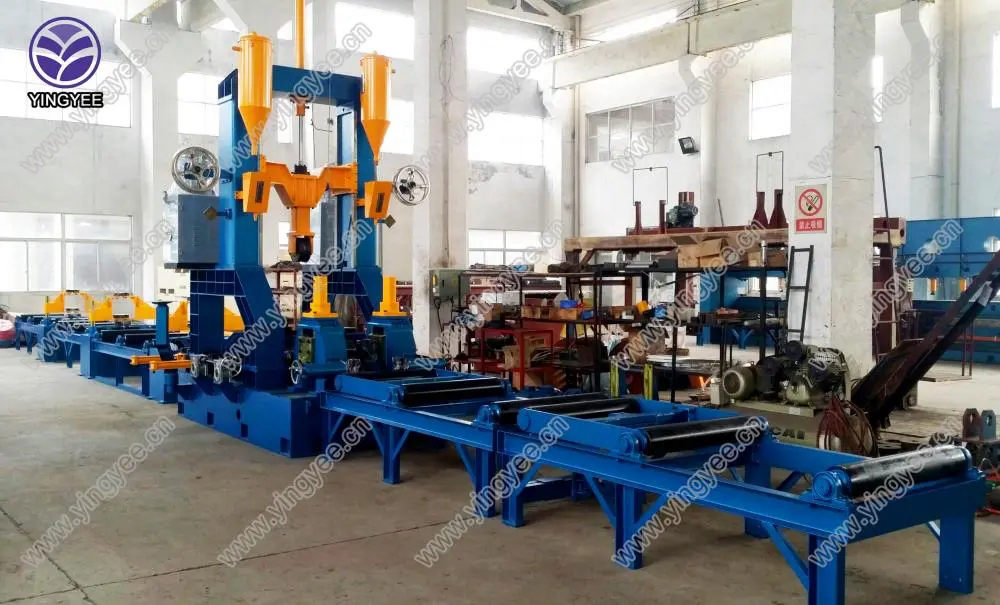
Understanding Coil Cut to Length Machines A Comprehensive Guide
In the modern manufacturing landscape, precision and efficiency are paramount. Industries, especially those dealing in metals and polymers, often require materials in specific lengths for further processing or assembly. This is where a coil cut to length machine becomes indispensable. These machines streamline the process of cutting coils into standardized lengths, ensuring consistent quality while minimizing waste.
What is a Coil Cut to Length Machine?
A coil cut to length machine is designed primarily for the processing of metal coils, including steel, aluminum, and other materials. The machine unwinds the coil, straightens the material, and then cuts it into predetermined lengths. The subsequent pieces can then be used for various applications, such as construction, automotive manufacturing, and appliance production.
Key Components of a Coil Cut to Length Machine
1. Unwinding Unit This is the first stage in the process. The coil is mounted on an uncoiler which ensures smooth unwinding. The tension is carefully controlled to prevent the coil from becoming misshaped or damaged during unwinding.
2. Straightening Unit After the coil is unwound, it often has some level of curvature or deformation. A straightening unit, equipped with rollers or a series of bends, is employed to ensure the material is perfectly flat. This is critical for ensuring precise cutting.
3. Measuring and Cutting System This section is crucial for the machine's operation. A digital measuring system accurately calculates the required length for each piece. An automated cutting mechanism, often powered by shear blades or laser technology, executes the cut, providing clean, uniform edges.
4. Stacking Unit Once the material is cut, it is typically stacked for further handling. This can be a manual or automatic process, where the cut lengths are neatly arranged for easy loading onto transport vehicles or for direct use in production lines.
Benefits of Using Coil Cut to Length Machines

1. Increased Efficiency The automation of cutting processes significantly reduces the time taken to prepare materials for production. This efficiency allows companies to enhance their throughput and meet market demands more rapidly.
2. Consistent Quality Manual cutting processes often lead to variability and mistakes. The precision of a coil cut to length machine ensures that every cut is consistent, resulting in higher quality products and reducing rework costs.
3. Material Savings By minimizing waste during the cutting process, these machines contribute to more sustainable manufacturing practices. This not only lowers material costs but also reduces environmental impact, promoting a greener approach to production.
4. Versatility Many coil cut to length machines are highly customizable, capable of handling various materials and thicknesses. This adaptability makes them suitable for a wide range of industries, from automotive to construction and beyond.
Applications of Coil Cut to Length Machines
The applications of coil cut to length machines are vast. In the automotive industry, for instance, they are used to produce components such as body frames and brackets. In the construction sector, they provide cut steel sheets for structural components. Additionally, they are essential in the manufacturing of appliances where specific metal lengths are required for assembly.
Trends and Innovations
With advancements in technology, coil cut to length machines are becoming smarter. Integration with Industry 4.0 practices, such as IoT and real-time data analytics, allows manufacturers to monitor and optimize production processes more effectively. Additionally, innovations in blade technology and cutting tools enhance precision and reduce wear and tear, resulting in lower operating costs over time.
Conclusion
As industries continue to evolve and demand higher efficiency and quality, coil cut to length machines play a crucial role in achieving these objectives. By automating the cutting process, businesses can not only improve their operations but also ensure that they remain competitive in a fast-paced market. Understanding how these machines work and their benefits can help manufacturers make informed decisions about their production strategies, leading to improved productivity and profitability. Whether in metal processing, automotive, or construction, the significance of coil cut to length machines in the modern manufacturing environment cannot be overstated.